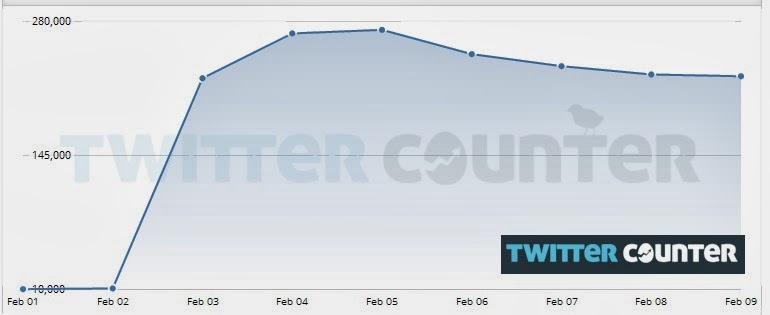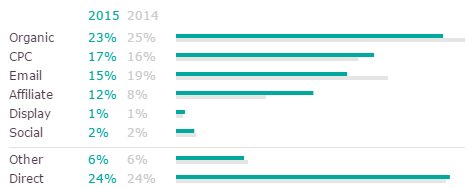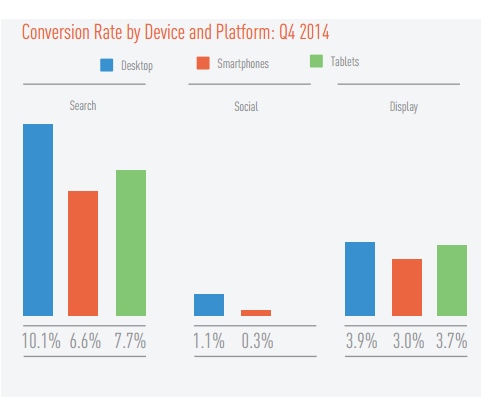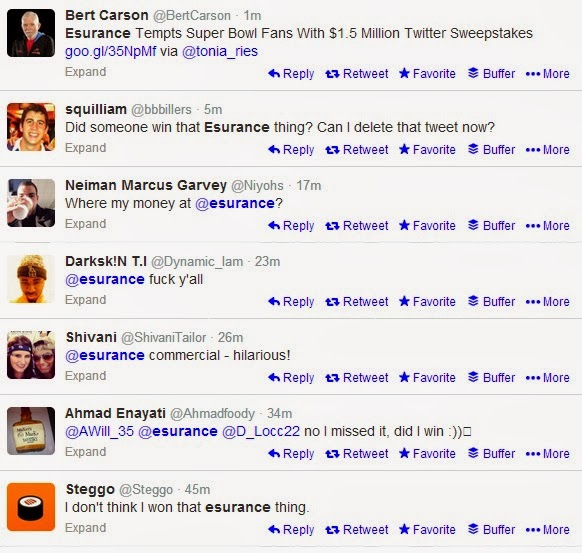Tweet
I am deeply disappointed to see Esurance's Super Bowl sweepstakes results widely celebrated. Six years into the social era, I thought we had reached a certain point of social media maturity where we realize that fans and followers are not leads and that relationships are built through shared values and meaningful interactions. I naively thought that we had turned a corner, with widespread understanding that winning in social media occurs by providing great experiences that build long-term relationships and not with campaigns that yield short-term spikes of activity. I was wrong.

You no doubt already know about the Esurance program (which some of you perhaps think is evidence of its success). Esurance bought the first post-Super Bowl ad spot and ran an ad featuring John Krasinski promoting a twitter sweepstakes. Since Esurance "saved" $1.5 million by buying the $2.5 million spot after the game rather than during the Super Bowl, one lucky winner who tweeted #EsuranceSave30 won that $1.5 million.
On Thursday, the brand released campaign figures, and at a glance they looked impressive. Esurance claims to have garnered 5.4 million uses of the #EsuranceSave30 hashtag and 2.6 billion social impressions on Twitter. I have some doubts as to the validity and interpretation of this data, but I will save those for an appendix at the end of this post, because my bigger concern is not about the accuracy of the data but whether this data ought to be celebrated as evidence of marketing or business success.
The attention heaped on Esurance's campaign data is just another instance of bloggers, marketing media and social media professionals celebrating questionable programs based on inconsequential numbers. This has been going on for years; for example, four years ago, Einstein Bagels gave every new Facebook fan a free bagel, and thousands of blog posts and headlines were launched when the brand saw a 7,000% increase in Facebook fans in just three days; six months after the Facebook stunt, Einstein reported disappointing revenue with same-store sales down more than a percent, and two years later, the company had the lowest earnings growth in its industry. The lesson from this (and a thousand other sweepstakes and giveaway programs that "bought" fans) is that fans and followers are not a business metric.

Those who do not learn from the past are doomed to repeat it, and once again, there has been an onslaught of articles and blog posts lauding Esurance's short-term metrics. Adweek embarrassingly called the Esurance outcome "mind-boggling," as if it is surprising that a $1.5 million prize would result in millions of tweets. (It would have been more "mind boggling" if the program hadn't!) The Wall Street Journal breathlessly declared Esurance "won" the Super Bowl. And one agency called this campaign a "master class in expanding your audience."
A $5 million campaign that yields 250,000 new Twitter followers is a "master class" in expanding audience? That represents a very pricey $20 per follower, not even considering that in the week since the Super Bowl, Esurance lost 15% of the new followers it gained. Besides, if fans and followers amounted to some sort of marketing or business asset, Blackberry, with 3.9 million followers, would be flying instead of knocking on death's door; Dippin' Dots would have announced record profits rather than declaring bankruptcy mere days after collecting its 5 millionth Facebook fan; and Pepsi, one of the top 30 brands in terms of Twitter followers, would be blowing away the market rather than under-performing the S&P500 by 50% since the brand joined Twitter in December 2008.
Why must the marketing industry continually relearn that fans and followers are not prospects, nor are they a reliable leading business indicator? The fans that are worth earning--the ones that follow or friend your brand not because of a freebie or sweeps but because they have experienced and loved your product or service--are lagging indicators.

No matter how many millions or billions of eyeballs or impressions were delivered, the Esurance campaign was flawed from the start. It encountered some of the typical issues we have seen with hashtag campaigns in the past, including offensive tweets people posted to enter, spammers and scammers jumping all over the Esurance hashtag and people now convinced the entire thing was rigged. But even aside from the inevitable mixed reaction that greets these sorts of campaigns, there are several issues that must be considered to critically evaluate the results from this and similar social sweepstakes:
Awareness is the right goal--for brands in a different place than Esurance
In most cases, awareness is a lousy goal. Kodak. Borders Books. Woolworth's. Washington Mutual. Oldsmobile. Stop me when I get to a brand that did not enjoy near universal awareness and yet failed anyway. Saab. Pan Am. Palm. Tower Records. Plymouth. Have I gotten to a brand that you do not know yet? Blockbuster. Betamax. Circuit City. Hostess. Pontiac. Sharper Image. All are in the brand graveyard (although a few have risen from the ashes as a shadow of their former selves.)
Awareness can be a legitimate marketing goal under certain circumstances, such as for new products, upstart brands or brands that need to alter brand associations, but why would a brand with a nine-figure marketing budget that has been advertising in national media for a decade still need to invest in awareness? Esurance's VP of Marketing is saying this program was all about awareness, but the brand already has strong awareness. According to JD Power, in 2009 it was the fifth most shopped auto insurance brand; in 2011 it had the sixth highest brand awareness among auto insurers; and Compete reported in 2011 that Esurance had the fourth-highest prospect and application shares among auto insurers.
Esurance has some brand problems, but awareness is not one of them. For instance, it offers a full line of insurance products but is too frequently associated only with auto. The brand also has perception issues to address; a 2012 Millward Brown tracking study found that the perception of Esurance's quality and value significantly lags that of its competitors. The brand is among the most recognized insurance brands but sits in the lowest quadrant in terms of both quality and value perception, so why is it investing in awareness campaigns?
I do not know the answer to that question, nor will you find an answer in the hundreds of blog posts and articles written in the past week about the Esurance campaign. No one thought to explore if this brand ought to be investing in multi-million-dollar campaigns to drive awareness. Bloggers and marketing writers merely gave knee-jerk praise to the #EsuranceSave30 numbers without considering Esurance's unique marketing challenges or business needs.
Awareness can't lead to trial and purchase without depth and breadth
Setting aside the question of whether Esurance should have been investing in awareness as a marketing goal, let's instead consider if big-dollar sweepstakes actually deliver awareness that matters. The lack of understanding of awareness among marketers has been one of my pet peeves for two decades. Awareness isn't unidimensional; brands cannot simply count impressions or measure whether or not people recognize its name.
For awareness to matter, it has to have depth and breadth. Depth is how deeply the awareness is held and whether the consumer can recall it aided or unaided. Breadth is about context--when does the brand come to mind, how positive are the associations, and what does the consumer recognize about the brand. Most social sweepstakes and giveaways are good for garnering narrow, shallow awareness--impressive-sounding numbers with no impact to the vital aspects of brand awareness.
What depth of awareness has Esurance created with this campaign? The brand utilized Twitter not to create dialog or engagement but as a means of entering a sweepstakes. Claiming that these impressions are meaningful to the brand would be akin to saying that someone photocopying their paper entry form and mailing it to friends creates valuable brand impressions.
And what breadth was created? The buzz today, if you look at Twitter, is focused on three topics--the success of the social campaign, that people are disappointed they did not win, and that some think the contest was rigged. What you do not see is a discussion of the value of insurance or why anyone should consider Esurance. There is no dialog about Esurance products or services. There is no breadth. It is not good enough to get people talking; you have to get them talking
about something that
changes brand perception or behaviors.
People will claim that perhaps this is the next step in the campaign--after collecting a bunch of new followers, the brand will shift the conversation. That argument ignores the way social media works and how consumers use it. The brand is already shedding many of its new followers, and the ones that remain are no more likely to pay attention to tweets about insurance products than the average consumer. We have seen it time and again with brands that collect fans and followers with cheap stunts and free stuff: the path through the marketing funnel from Twitter follower to customer is extremely weak.
To be fair, it is possible to run a sweepstakes that creates awareness with depth and breadth. My friend Ken Hittel shared a New York Life example. The brand ran a contest to give away 60 financial versions of The Game Of Life board game. By keeping the reward small and focusing not on distributing money but on a relevant promotional item, New York Life created deeper, broader awareness and kept the dialog going (for a tiny fraction of the cost of Esurance program).
If it's too easy, that tells you something
Another one of the hints that there may be less to this story than the data indicates is this: The program was easy. Since the beginning of the social era, marketers have been trying to find simple ways to exploit social media for their advantage, but success in social media is not straightforward, nor should it be. If brands could honestly build interest, purchase intent and sales merely by dumping a bunch of cash into a hashtag sweeps, Twitter would be full of these sorts of promotions. Nothing worth doing comes easy, and any social program this shockingly easy to execute and repeat ought to raise doubts.
The funny thing is how easy it is to see this program for what it is if you remove the dazzle of the post-Super Bowl ad spot and the reflexive excitement over the big numbers. For example, what if tomorrow I offer to give away $500 to someone who posts #AugieRayRocks and follows my Twitter handle? You would not advise this tactic to me or anyone else, would you? This hypothetical program is obviously spammy and impractical, more inclined to collect useless followers who want to win cash than worthwhile followers interested in my content. So what makes Esurance's campaign different? If anything, the huge wad of dough offered by Esurance only made their effort more interesting to less valuable prospects, the kind who haunt sweepstakes sites and spend hours every week entering random contests.
Esurance isn't the first brand to buy fans with a giveaway or sweepstakes. Marketers have been trying this for years. Five years ago, in the early days of Twitter, UK hosting company Moonfruit launched what may be the first hashtag sweeps on Twitter, but traffic and engagement dropped like a stone the moment the program ended, and the company did not repeat it. Einstein gave away free bagels to increment Facebook friends; as we have previously noted, it did not drive demonstrable success and the brand never repeated the program. If brand success were as easy as giving away stuff on Twitter, we would all be doing it already.
Conclusion
Social media is not new any longer. We have seen enough brands fold with strong awareness and lots of fans to know that there are far more important metrics than awareness and follower count. We have observed enough sweeps and giveaways to know that the brands that ran them did not get the sort of results that encouraged them to continue using those tactics (or they would do so). It is long past time to stop shoveling shallow praise at shallow programs yielding shallow results.
I believe the social media marketing business is in for a rough couple of years as the value of branded content changes and marketers gain further understanding of how social does and does not fit for marketing goals. On Facebook, marketers face collapsing engagement and even greater challenges this year as the opportunity for earned media dwindles. Twitter is struggling to demonstrate it can deliver the goods both to marketers and investors. New social networks are being promoted as the next big thing, but thus far scale has been truly problematic. (Many marketers praised Tide for its creative use of Vine during the Super Bowl, but just one of the brand's 19 videos earned more than 500 shares and most did not get shared even 100 times on Vine--an outcome that may thrill the corner boutique but not marketing leaders for a massive P&G brand.)
To have so much attention heaped on Esurance with so little care given to whether Twitter sweeps fit the brand's needs, if Esurance can convert followers into customers at any reasonable scale and efficiency, or if the program will or can contribute to the bottom line is, in my opinion, an embarrassment to the industry. The amazing level of buzz demonstrates how quickly social media professionals grab onto any hint of success and how unwilling they are to deeply explore and challenge the ways social fits (or doesn't) with marketing objectives.
I thought our industry was maturing, but once again I am reminded that too many marketers believe social is a medium to be exploited
by brands and not a new way of thinking and acting that happens
to brands.
Postscript: The validity and interpretation of the reported data:
I know this blog post is more than long enough already, but I wanted to explore the data and whether it jibes with what we know about Twitter. I would have included this analysis earlier, but I thought it would detract from the primary point I wanted to make; nonetheless, I think if we fire up our calculators and apply our experience, we can begin to uncover questions about the data shared for this program.
The figures imply each tweet was seen 481 times (2.6 billion social impressions divided by 5.4 million uses of the #EsuranceSave30 hashtag). I've seen some data indicating the average Twitter user has 208 followers, but a recent and thorough analysis revealed that active Twitter accounts (those that have posted in the last 30 days) have a median of just 61 followers. Moreover, since many folks created new Twitter accounts just to enter, it is safe to assume the typical account tweeting #EsuranceSave30 had fewer than the median. As a result, it is very difficult to square the number of hashtag uses with the number of impressions reported.
Moreover, even if we set aside questions about the accuracy of the 2.6 billion figure, it is important to understand that Esurance is playing loose by calling these "impressions" and not "potential impressions." No Twitter user can know how many of their followers see a given tweet--at any moment, most people are not signed on to Twitter and watching their tweet stream, so any single tweet is actually seen by a fraction of an account's followers. No accurate data exists as to the percent of followers that read each tweet, but I have seen estimates in the five to ten percent range. If this program had 2.6 million
potential impressions (computed with the assumption every follower of every account that tweeted saw every tweet) and if just 10% of those accounts' followers actually saw the tweets, then actual impressions were closer to 260 million.
And, while we're at it, let's also point out the giant difference between reach (the number of unique people who saw the tweets) and impressions (the number of times tweets were seen by non-unqiue individuals). If the average person who saw an Esurance tweet saw three of them, then the reach of this program is one-third the impressions (actual, not potential). Considering all of the above, we can calculate the following based on hypothetical but reasonable assumptions:
- 5.4 million hashtag uses x
- 61 median followers x
- 10% of a tweeting account's followers that actually seeing the tweet /
- 3 impressions for each unique individual who saw a tweet =
- Reach of 11 million uniques
Still a big number but quite a bit different from 2.6 billion, wouldn't you say? This is the sort of analysis I would expect from mainstream media outlets like Adweek and Ad Age before they jump on the bandwagon and merely repeat the numbers they are fed by a brand.

















 You no doubt already know about the Esurance program (which some of you perhaps think is evidence of its success). Esurance bought the first post-Super Bowl ad spot and ran an ad featuring John Krasinski promoting a twitter sweepstakes. Since Esurance "saved" $1.5 million by buying the $2.5 million spot after the game rather than during the Super Bowl, one lucky winner who tweeted #EsuranceSave30 won that $1.5 million.
You no doubt already know about the Esurance program (which some of you perhaps think is evidence of its success). Esurance bought the first post-Super Bowl ad spot and ran an ad featuring John Krasinski promoting a twitter sweepstakes. Since Esurance "saved" $1.5 million by buying the $2.5 million spot after the game rather than during the Super Bowl, one lucky winner who tweeted #EsuranceSave30 won that $1.5 million.
 No matter how many millions or billions of eyeballs or impressions were delivered, the Esurance campaign was flawed from the start. It encountered some of the typical issues we have seen with hashtag campaigns in the past, including offensive tweets people posted to enter, spammers and scammers jumping all over the Esurance hashtag and people now convinced the entire thing was rigged. But even aside from the inevitable mixed reaction that greets these sorts of campaigns, there are several issues that must be considered to critically evaluate the results from this and similar social sweepstakes:
No matter how many millions or billions of eyeballs or impressions were delivered, the Esurance campaign was flawed from the start. It encountered some of the typical issues we have seen with hashtag campaigns in the past, including offensive tweets people posted to enter, spammers and scammers jumping all over the Esurance hashtag and people now convinced the entire thing was rigged. But even aside from the inevitable mixed reaction that greets these sorts of campaigns, there are several issues that must be considered to critically evaluate the results from this and similar social sweepstakes: